This is an old revision of the document!
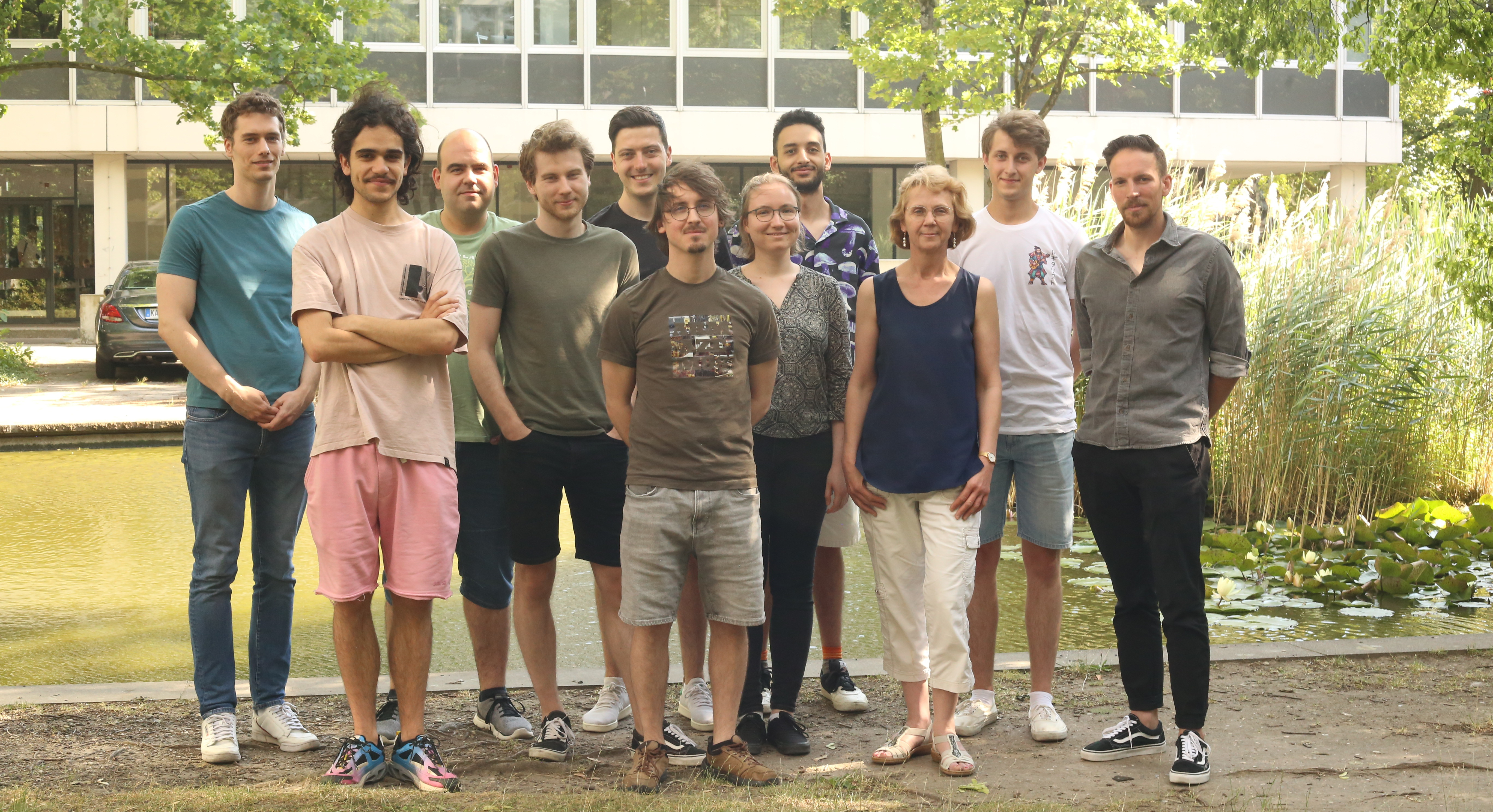
Research Group of Prof. Dr. Milada M. Mühlleitner
My research centers around physics beyond the Standard Model with the aim to identify viable New Physics extensions and test them at current and future colliders. Extensions of the Higgs sector beyond the Standard Model can solve problems inherent to the Standard Model. Such solutions comprise viable Dark Matter candidates or sucessful baryogenesis to explain the observed matter-antimatter asymmetry. Based on precision calculations of both experimental observables and theoretical constraints we corner the valid parameter space of supersymmetric (SUSY) and non-SUSY Higgs sectors. Their precise investigation is particularly relevant in view of the fact that no direct detection of New Physics has been made so far. We also link our resarch at high-energy colliders with cosmological aspects in our analyses of the electroweak phase transition in the early universe. It is part of electroweak baryogenesis that may explain the observed asymmetry between matter and anti-matter. We furthermore investigate to which extent our investigated models provide Dark Matter candidates that can be tested at high-energy colliders.
You can find a link to Inspire for my list of publications here.
Current research topics are:
Single and Double Higgs production at the LHC
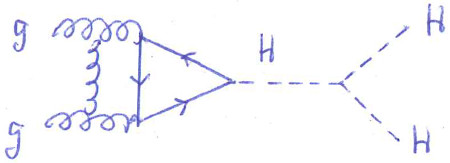 |
We provide precision prediction for both single and double Higgs production at the LHC in New Physics extensions beyond the Standard Model. Precise information on single Higgs production is important for making reliable predictions of possible discovery rates at the LHC and for identifying the underlying model. Double Higgs production gives access to the Higgs self-couplings and thereby crucial information on the Higgs potential that is essential for the mechanism of electroweak symmetry breaking. |
Higgs Boson Decays
|
As part of our research topic to make reliable predictions for production rates of non-Standard-Model Higgs bosons we compute higher-order corrections to Higgs boson decays in various supersymmetric and non-supersymmetric extensions of the Standard Model. The combination of these predictions with current collider constraints and theoretical requirements allows us to corner the valid parameter space of New Physics extensions. |
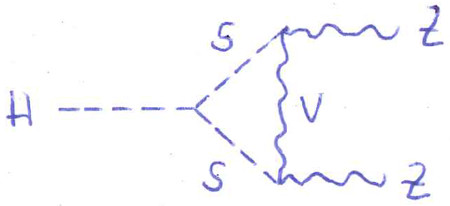 |
Supersymmetric Higgs Boson Masses and Higgs Self-Couplings
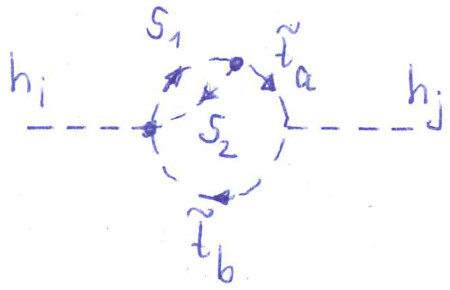 |
In supersymmetry, Higgs boson masses are derived from the input parameters of the model. Higher-order corrections to the predictions of these masses are crucial to shift the mass of the Standard Model-like Higgs boson among the Higgs spectrum of these models to the value measured by the exeriment. A lot of activity has been ongoing to constantly improve the predictions and make reliable estimates of their theoretical error. We are part of these efforts. We calculate the higher-order corrections to Higgs boson masses and trilinear Higgs self-couplings in the Next-to-Minimal Supersymmetric Extension of the Standard Model (NMSSM). The Higgs self-couplings are closely related to the Higgs boson masses through the Higgs potential. |
The Electroweak Vacuum
|
The Higgs potential of extended Higgs sectors has a complicated vacuum structure, with the possibility of have also CP-violating, charge- or colour-breaking minima. For valid models it has to be made sure that the electroweak vacuum is the global minimum. We investigate the vacuum structure of extended Higgs sectors and their stability including also higher-order corrections. We analyse how these considerations are reflected in the allowed parameter space of the models with corresponding implications for collider phenomenology. |
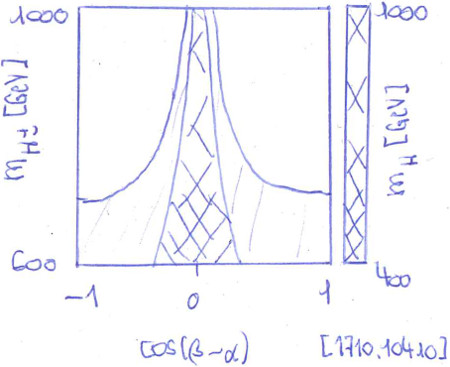 |
Baryogenesis
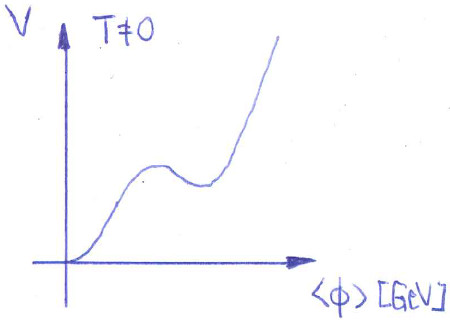 |
Electroweak baryogenesis may explain the observed baryon-antibaryon asymmetry provided the three Sakharov conditions are fulfilled. These are baryon-number violating processes, C and CP violation and departure from the thermal equilibrium. While the Standard Model fulfills all these conditions the measured Higgs mass value is to high to provide a strong first order phase transition as required for successful baroygenesis. We investigate the effective Higgs potential of Standard Model Higgs sector extensions including thermal corrections with the aim to determine the strength of the electroweak phase transition and the possibility of generating the observed asymmetry in the early universe. |
Dark Matter
|
We recently entered the field of Dark Matter. Our first investigation focused on a model with CP violation within the Dark Sector. We studied to which extent this CP violation could be observed at the LHC. Our currently ongoing research is concerned with precision predictions of direct Dark Matter detection. |
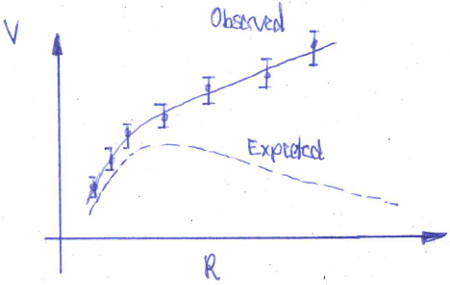 |
Link to Programs
All our calculations of Higgs precision observables are made publicly available to the research community by implementing them in public computer tools. The links to the various computer tools together with their description, their download and information on how to use the programs can be found at:
Information on Bachelor and Master Theses
The subjects of Bachelor and Master Theses are centered around the research program of the working group. The students will be directly involved in the ongoing activities with the aim to actively contribute. The students will get to know the state-of-the-art calculational techniques and tools, will learn about the currently studied new physics models and will contribute within the given research topics to colliders or DM observables that can be studied at the ongoing experiments. The subjects will be adapted to the level that can be expected from students at the Bachelor or Master stage. The students at the Master level ideally have already attended lectures on theoretical particle physics. The students will be embedded in an active and lively research environment and learn from the professor, postdoctoral, doctoral and master students the state-of-the-art techniques and how to handle the typically used computer tools comprising e.g. FeynArts, FeynCalc, FormCalc, LoopTools etc. There will be weekly working group meetings and regular meetings with the professor. The students will get insights in the work of a researcher in high-energy physics and contribute with their work to the ongoing research activities. This will be beneficial for a possible future research career as well as for employment in the private sector. Additionally, once a year the whole working group makes a research stay in Lisbon where we have a close collaboration with the local research groups around Prof. Santos and Prof. Ferreira. Students from the Master level on have the possibility to participate. This research stay additionally allows to get to know an international research environment.
Information on PhD Theses
The subjects of PhD Theses are centered around the research activities of my working group. The scientific and computational level will of course be higher than in a Bachelor or Master Thesis. You bring along experience in theoretical particle physics. A Master Thesis in experimental particle physics does not preclude a possible PhD thesis in my working group, however, and has to be discussed on a case by case basis. We have several possibilites to fund a PhD thesis, as listed here:
If you are interested in a PhD thesis please visit these web pages and in parallel contact me directly.
For specific Bachelor or Master subjects, the possibility of a PhD thesis in my working group or additional information please contact me directly, preferably via email (milada.muehlleitner@kit.edu) or by phone (0721 608-46366). We can then meet to talk in person.
